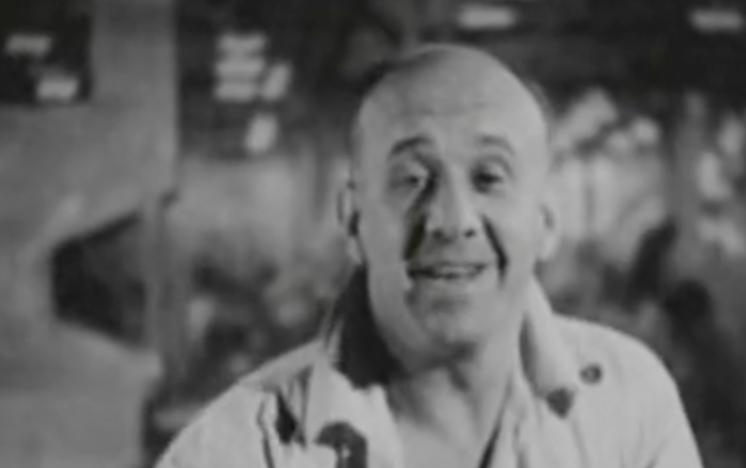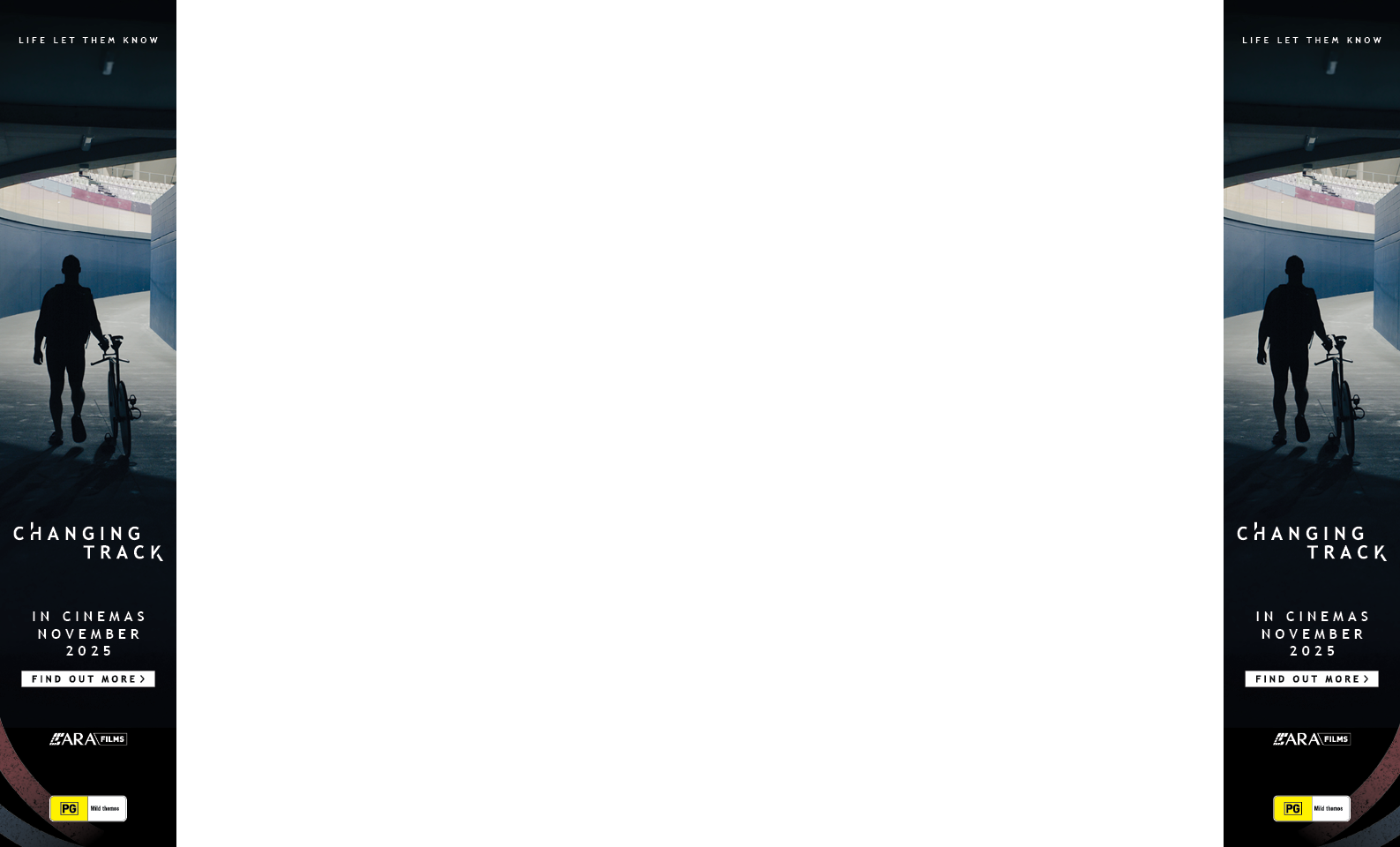by Stephen Vagg
The Australian government financed various propaganda shorts during World Two. One of the most elaborate was South West Pacific, which focused, as per title, on Australia’s role as the main Allied base in the South West Pacific area.
South West Pacific was made by the leading filmmakers in the country at the time – producer-director Ken G Hall and his ace team at Cinesound – and was given a healthy budget, big name cast, and a special introduction by Prime Minster John Curtin.
The result was the most controversial Australian film of the war.
South West Pacific, which ran for around half an hour, comprised of a series of vignettes where people talked to the camera about their contribution to the war effort – a factory manager, a farmer, a munitions worker, etc.

The decision was made to use actors rather than real people, with a cast featuring the leading names from Australian cinema at the time (not a huge field, admittedly); these included: character actor extraordinaire Alec Kellaway (as a factory worker); the queen of Sydney radio, Muriel Steinbeck (as a beautician who goes to work in a munitions factory); the best actor in the country, Peter Finch (as an RAAF pilot); future film director Ralph Smart (as an RAF pilot); post-Forty Thousand Horsemen/pre-Overlanders Chips Rafferty (as a mechanic); famed ex-vaudevillian Joe Valli (as another mechanic); Dad Rudd himself Bert Bailey (in his last movie, as a farmer); established heartthrob Grant Taylor (as an Australian infantryman); and future Hollywood heartthrob Ron Randell in his first movie (as an American infantryman). The script was written by journalist Tom Gurr.
South West Pacific was released in June 1943. It initially received strong reviews; Doc Evatt, the Foreign Minister, took a copy of the movie with him overseas, while Senator Bill Ashley, Minister for the Department of Interior (who commissioned the film), called South West Pacific the best picture ever made by the Department.
However, in July the movie was screened for Members of Parliament in Canberra, on a double bill with the British documentary Desert Victory (1943). This screening was a disaster for the Australian film, with audience members laughing and walking out, and many unflattering comparisons being made with Desert Victory.
The Leader of the Opposition (Arthur Fadden, a one-time member of an amateur black and white minstrel troupe) then weighed in, complaining that South West Pacific had been commissioned for political purposes to assist the government in the upcoming 1943 Federal election and demanded the film be withdrawn from circulation.
Critical response from newspaper reviewers turned hostile and a cleric took it upon himself to cut out the world “bloody” from the film for a screening in Sydney. Prime Minister John Curtin ordered that all future screenings of South West Pacific be stopped, and that instead, the government commission an entirely new documentary which was more realistic and did justice to Australian services fighting in the South West Pacific area (this would result in 1944’s Jungle Patrol, also written by Tom Gurr).
Curtin emphasised that Cinesound had only done what they’d been asked to do with South West Pacific – but the fact was that the Prime Minister of Australia had asked for an Australian movie to be withdrawn from circulation because a few people got annoyed by it.
South West Pacific is admittedly not much of a movie. While Ken G. Hall directs with customary skill, the device of getting actors to talk to the camera in monologues pretending to be real people feels a little silly, not helped by their florid self-conscious dialogue. Occasionally, the film veers into outright camp as in the bit where Muriel Steinbeck’s character Gwennie, the former beauty parlour technician turned munitions factory worker, pours TNT into containers while she’s chatting. And various sections are dull, such as Alec Kellaway talking about the joys of working in a factory, Bill Perryman’s road builder, and John Nugent-Hayward’s factory manager (although it was politically fascinating to hear him talk about the high rates of income tax that Australians had to pay.)
Still, the film isn’t so bad that it needed to be withdrawn. There’s some excellent acting and photography. Sociologically the movie is fascinating. Characters are very upfront about Australia’s problems and defeats during the war – we hear about the disasters in Greece, Crete, Malaya, and Singapore, and the loss of the ships Sydney, Perth and Canberra. We also liked how Grant Taylor paid tribute to the Kiwi and Indian soldiers as well as the Poms and Yanks. (The movie arguably has a left wing bent with its praise of high taxes, industry workers, women and Indians – maybe this is what got Arthur Fadden’s nose out of joint). It’s very moving to hear Grant Taylor’s character talk about his brother being captured, knowing that Taylor’s brother in real life died on the Sydney.
Incidentally, Chips Rafferty’s brother Frank would die as a POW in 1944 on the Japanese POW transport ship Rakuyo Maru.
 The most frustrating thing about South West Pacific, for us at any rate, is that so many of the segments would have provided the basis for a more entertaining full-length feature. Bert Bailey on a farm having to deal with the female land army, with attractive women milking cows… that would’ve made a fantastic Dad and Dave comedy. Muriel Steinbeck as a munitions factory worker with her naval boyfriend – there’s a potentially wonderful movie there. Ditto Grant Taylor and Ron Randell as an Aussie and Yank soldier cut off in the jungle against the Japanese, or Peter Finch and Ralph Smart as duelling pilots in New Guinea, with Chips Rafferty and Joe Valli as their duelling mechanics. They’re all great features-that-might-have-been.
The most frustrating thing about South West Pacific, for us at any rate, is that so many of the segments would have provided the basis for a more entertaining full-length feature. Bert Bailey on a farm having to deal with the female land army, with attractive women milking cows… that would’ve made a fantastic Dad and Dave comedy. Muriel Steinbeck as a munitions factory worker with her naval boyfriend – there’s a potentially wonderful movie there. Ditto Grant Taylor and Ron Randell as an Aussie and Yank soldier cut off in the jungle against the Japanese, or Peter Finch and Ralph Smart as duelling pilots in New Guinea, with Chips Rafferty and Joe Valli as their duelling mechanics. They’re all great features-that-might-have-been.
So, South West Pacific isn’t perfect, and certainly not up to the standard of 100,000 Cobbers or Jungle Patrol. Still, the decision to have it withdrawn from exhibition was an absurd knee-jerk over-reaction and says much about Australia’s chronic insecurity when it comes to its own films. Most students of the history of Australian cinema are aware of the lack of support for our filmmakers from the Menzies government; it’s less acknowledged that the Labor governments of Curtin and Chifley weren’t that much better. Sorry, we know that they did some great things, but helping the movie industry wasn’t one of them.
You can watch the whole of South West Pacific here




